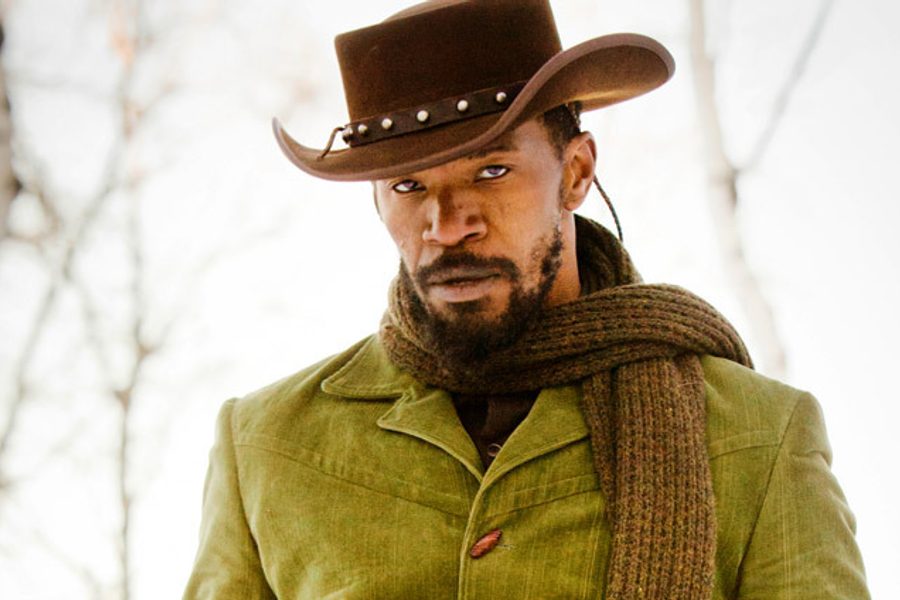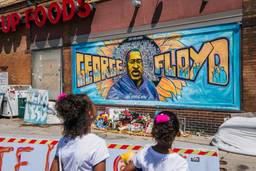
Quentin Tarantino has spent the past 10 years crafting gorgeous, hyper-violent revenge flicks, mashing up B-movie homage with stories of the oppressed overcoming their oppressors. Kill Bill is about a woman taking bloody revenge on her abusive ex; Inglourious Basterds is about Jews taking bloody revenge on Nazis; his latest, Django Unchained, an Oscar nominee for best picture, is about a former slave taking bloody revenge on slaveowners. And each time one of his films hits the screen, we argue about whether it’s callous exploitation, subversive radical brilliance, or some combination of the two that you can only understand after earning several advanced degrees in media studies and/or getting very stoned.
Django Unchained, however, is causing even more uproar than usual. Some of it is sheer racist panic: After Jamie Foxx, who plays Django, joked on Saturday Night Live that it was fun to “kill all the white people in the movie,” Jeffrey T. Kuhner took to the Washington Times to publicly flip out over what he called “the rise of black bigotry.” Meanwhile, actual white nationalists are calling Django an “anti-White racial snuff film,” according to Max Read of Gawker. One’s tempted to praise Django to the skies simply to shut those people up. But there are plenty of more complicated critiques out there. Filmmaker Spike Lee, who told Vibe that he wouldn’t even see the movie, tweeted, “American Slavery Was Not A Sergio Leone Spaghetti Western. It Was A Holocaust. My Ancestors Are Slaves. Stolen From Africa. I Will Honor Them.” Meanwhile, Dana Stevens at Slate noted that the movie’s lavish depictions of violence — aside from Django shooting, whipping and blowing up a few slaveowners, the slaves themselves are whipped, branded, torn apart by dogs, and forced to fight each other to the death — left an unpleasant aftertaste. “[T]here’s something about [Tarantino’s] directorial delectation in all these acts of racial violence that left me not just physically but morally queasy.”
Stevens cuts to the core of the Tarantino Paradox. On the one hand, Tarantino’s plot arcs of revenge are irresistible, and there’s an undeniable radical charge in watching women and people of color and Jews take arms and revolt against their tormenters. When Django finally lets loose, grabbing his former master’s whip out of his hand and beating him half to death with it, the thrill is visceral. But there’s the lingering sense that Tarantino is more interested in the thrill (and viscera) than in anything else. His movies were violent long before they were political, and there’s the sense that his recent films depicting the righting of history’s greatest wrongs may just be a convenient excuse to showcase the wrongs themselves. In Basterds, Tarantino provided us with a long close-up of Christoph Waltz having a swastika carved into his forehead; in Django, he provides us with a close-up of Kerry Washington (as Django’s wife, Broomhilda), having a red-hot brand pressed into her cheek. While one of these shots is nominally about the triumph of the oppressed, and the other is nominally about the inhumanity of the oppressor, they’re both really about the same thing: what it looks like when very, very bad things happen to a person’s face.
That being said, Django may find Tarantino at his most serious and tasteful. As many critics have noted, the violence in Django is small change compared to the actual violence inflicted upon enslaved black people. And the film’s original screenplay, which is available online, reveals that many of the goriest sequences were cut (including the rape of Broomhilda). Tarantino appears to have understood that these scenes would overwhelm viewers; after screening them before test audiences, he said, “I realized that I had traumatized [the audience] too much to go where I needed them to go.”
But even if we are getting the most restrained version of Django possible, the place Tarantino wants us to go looks like … well, like a Tarantino movie. The violence is, as always, executed with a true fetishist’s attention to detail: A Klansman’s death is represented by a gorgeous shot of pure crimson blood, spattered over a riderless white horse. One slaveowner is shot in the gut so hard that she is blown across the house. These violent images are indelible, beautiful, even funny. But mostly, they’re cinematic. Despite the horrific brutality onscreen, Tarantino’s wink-wink, nudge-nudge style of directing keeps the audience in a state of ironic remove, always at least somewhat aware that they’re watching a bunch of actors roll around in corn syrup.
Maybe some viewers find the ironic distance necessary, in order to make the movie cathartic instead of traumatic. But I keep coming back to the shot of Washington’s face. While watching a woman being mutilated that badly and for that horrific a reason, should I have been noticing the lighting? Should I have been aware that I was watching a movie? Should I be able to talk about how that looked? Worst of all: Should I be worried that how it looked was Tarantino’s chief concern?
Jude Ellison Sady Doyle is an In These Times contributing writer. They are the author of Trainwreck: The Women We Love to Hate, Mock, and Fear… and Why (Melville House, 2016) and was the founder of the blog Tiger Beatdown. You can follow them on Twitter at @sadydoyle.









